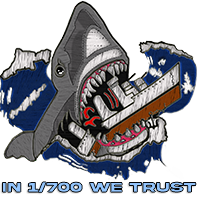Maquette Triumph Models, Résine, 3D, métal, PE, version waterline
Maquette sortie en 2024
Triumph Model kit, Resin, 3D, brass, PE, waterline version
Kit issued in 2024
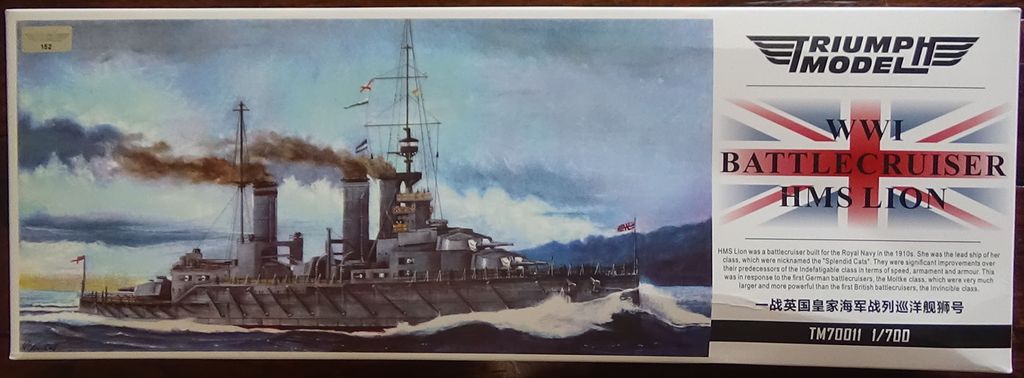
La classe Lion était une paire de croiseurs de bataille (HMS Lion et HMS Princess Royal) construits pour la Royal Navy avant la Première Guerre mondiale. Surnommés les "Splendid Cats", ces navires représentaient une amélioration significative par rapport à leurs prédécesseurs de la classe Indefatigable en termes de vitesse, d'armement et de blindage. Ces améliorations ont été apportées en réponse aux croiseurs de bataille allemands de la classe Moltke, qui étaient à leur tour plus grands et plus puissants que les premiers croiseurs de bataille britanniques de la classe Invincible.
Le Lion servit de navire amiral aux croiseurs de bataille de la Grand Fleet pendant la Première Guerre mondiale. Il coula le croiseur léger allemand Cöln pendant la bataille de Heligoland Bight en août 1914 et participa aux batailles du Dogger Bank en 1915 et du Jutland l'année suivante. Il fut si gravement endommagé lors de la bataille du Dogger Bank qu'il dût être remorqué jusqu'au port. Au cours de la bataille du Jutland, le Lion fut victime d'un grave incendie de cordite qui aurait pu le détruire. Les deux navires étaient présents lors de l'action non concluante du 19 août 1916. Les deux navires passèrent le reste de la guerre à effectuer des patrouilles sans incident en mer du Nord ; ils assurèrent une couverture lointaine lors de la deuxième bataille de Heligoland Bight en 1917. En 1920, ils furent mis en réserve, puis vendus à la ferraille quelques années plus tard, conformément aux termes du traité naval de Washington de 1922.
Lors de la Bataille du Jutland le 1er juin 1916 le Lion était le navire amiral de l'escadre de Beatty. L'engagement débuta à 15h30 par un affrontement entre les croiseurs de bataille de l'amiral Beatty et ceux de l'amiral Hipper, dans un mouvement resté sous le nom de "Run to the South".
La distance se réduisit alors à moins de 16 000 m. Les navires britanniques étaient encore en train d'effectuer leur virage et seuls les deux navires de tête, le Lion et le Princess Royal, avaient stabilisé leur trajectoire lorsque les Allemands ouvrirent le feu les premiers à 15h48. Les tirs allemands furent précis dès le début, mais les Britanniques surestimèrent leur portée car les navires allemands se fondaient dans la brume. Le Lion, navire britannique de tête, engagea le Lützow, son homologue dans la formation allemande. Les tirs du Lützow étaient très précis et le Lion fut touché deux fois dans les trois minutes qui suivirent l'ouverture du feu par les Allemands. À 15 h 54, la portée n'était plus que de 11 800 m et Beatty ordonna un changement de cap de deux points à tribord pour ouvrir la portée à 15 h 57. Le Lion toucha le Lützow pour la première fois deux minutes plus tard, mais le Lützow lui rendit la pareille à 16 h lorsqu'un de ses obus de 305 mm atteignit la tourelle " Q " à une portée de 15 100 m. L'obus pénètra le joint entre la plaque frontale de 9 pouces de la tourelle et le toit de 3,5 pouces et explosa au centre du canon gauche, tua ou blessa toutes les personnes présentes dans la tourelle et déclencha un incendie qui couva, malgré les efforts déployés pour l'éteindre. Les récits des événements ultérieurs diffèrent, mais les portes du magasin avaient été fermées et le magasin inondé lorsque le feu couvant a enflammé les huit charges propulsives pleines dans la salle de travail de la tourelle à 16 h 28. Elles brûlèrent violemment, les flammes atteignant la tête de mât, et tuèrent la plupart des équipages du magasin et de la soute à obus qui se trouvaient encore dans la partie inférieure de la tourelle. La pression du gaz déforma gravement les portes du magasin, qui aurait probablement explosé s'il n'avait pas déjà été inondé, entrainant la perte probable du navire. Le major des Royal Marine Francis Harvey, commandant de la tourelle mortellement blessé, reçut la Victoria Cross à titre posthume pour avoir ordonné l'inondation du magasin.
Au cours de cette action, les croiseurs de bataille HMS Indefatigable et HMS Queen Mary furent touchés par des tirs plongeants qui percèrent leur mince blindage de pont, provoquèrent l'explosion des soutes et la désintégration des deux navires. Cette bataille mit en lumière la faiblesse principale du croiseur de bataille : son blindage trop léger. Ce type de navire avait été conçu en 1906 à une époque où la cadence et la précision du tir étaient suffisamment lentes pour qu'un navire très rapide puisse lui échapper. 10 ans plus tard cet avantage était réduit à néant.
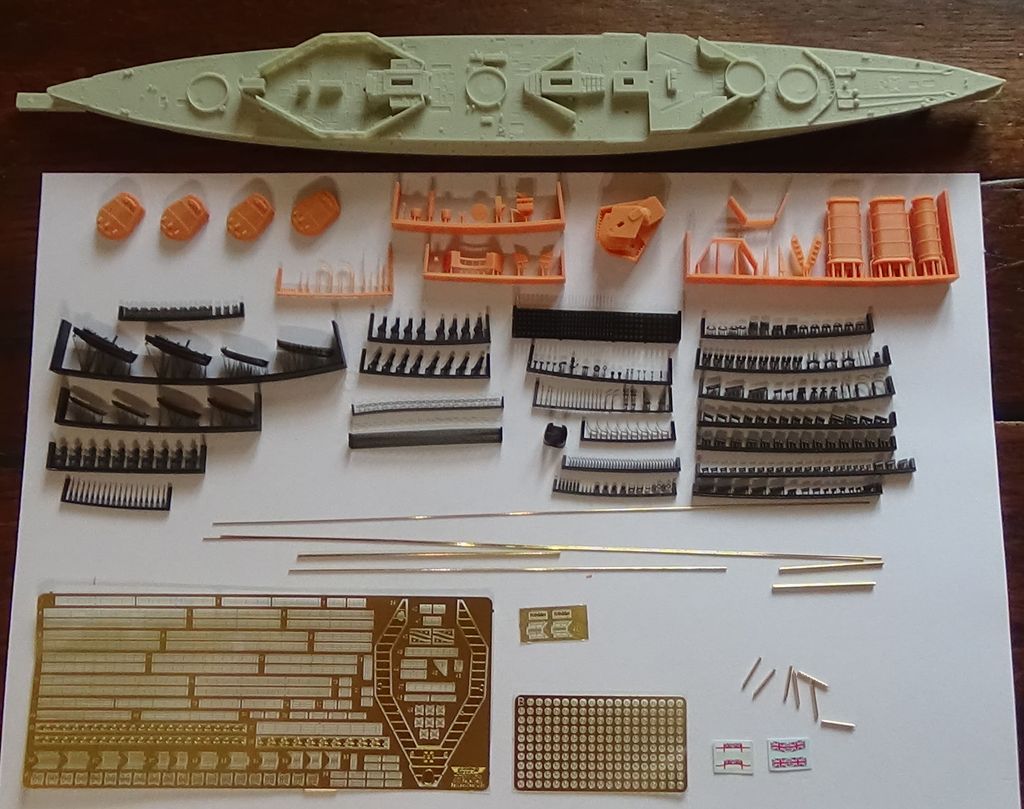
The Lion class was a pair of battlecruisers (HMS Lion and HMS Princess Royal) built for the Royal Navy before the First World War. Nicknamed the "Splendid Cats", these ships represented a significant improvement on their Indefatigable-class predecessors in terms of speed, armament and armour. These improvements were made in response to the German Moltke-class battlecruisers, which were in turn larger and more powerful than the early British Invincible-class battlecruisers. The Lion served as flagship for the Grand Fleet battlecruisers during the First World War. She sank the German light cruiser Cöln during the Battle of Heligoland Bight in August 1914 and took part in the Battles of Dogger Bank in 1915 and Jutland the following year. She was so badly damaged during the Battle of the Dogger Bank that she had to be towed back to port. During the Battle of Jutland, the Lion suffered a serious cordite fire that could have destroyed her. Both ships were present during the inconclusive action on 19 August 1916. The two ships spent the rest of the war on uneventful patrols in the North Sea and provided distant cover during the Second Battle of Heligoland Bight in 1917. In 1920, they were mothballed and sold for scrap a few years later, in accordance with the terms of the Washington Naval Treaty of 1922.
During the Battle of Jutland on 1st June 1916, the Lion was the flagship of Beatty's squadron. The engagement began at 3.30pm with a clash between Admiral Beatty's battlecruisers and Admiral Hipper's battlecruisers, in what became known as the "Run to the South". The distance was then reduced to less than 16,000 metres. The British ships were still turning and only the two leading ships, the Lion and the Princess Royal, had stabilised their course when the Germans opened fire first at 3.48pm. The German fire was accurate from the start, but the British overestimated its range as the German ships blended into the fog. The Lion, the lead British ship, engaged the Lützow, its counterpart in the German formation. The Lützow's fire was very accurate and the Lion was hit twice within three minutes of the Germans opening fire. At 3.54pm, the range was down to 11,800m and Beatty ordered a two-point course change to starboard to open the range at 3.57pm. The Lion hit the Lützow for the first time two minutes later, but the Lützow returned the favour at 4pm when one of her 305mm shells hit the 'Q' turret at a range of 15,100m. The shell penetrated the joint between the turret's 9-inch faceplate and the 3.5-inch roof and exploded in the centre of the left gun, killing or wounding everyone in the turret and starting a fire that smouldered despite efforts to extinguish it. Accounts of later events differ, but the magazine doors had been closed and the magazine flooded when the smouldering fire ignited the eight full propellant charges in the turret workroom at 4.28pm. They burned violently, the flames reaching the masthead, and killed most of the magazine and shell bay crews still in the lower part of the turret. The pressure of the gas severely distorted the magazine doors, which would probably have exploded had it not already been flooded, leading to the probable loss of the ship. Royal Marine Major Francis Harvey, the mortally wounded turret commander, was posthumously awarded the Victoria Cross for ordering the flooding of the magazine. During this action, the battlecruisers HMS Indefatigable and HMS Queen Mary were hit by plunging fire that pierced their thin deck armour, causing the bunkers to explode and the two ships to disintegrate. This battle highlighted the main weakness of the battlecruiser: its armour was too light. This type of ship had been designed in 1906 at a time when the rate and accuracy of fire were slow enough for a very fast ship to escape. 10 years later, this advantage had been wiped out.

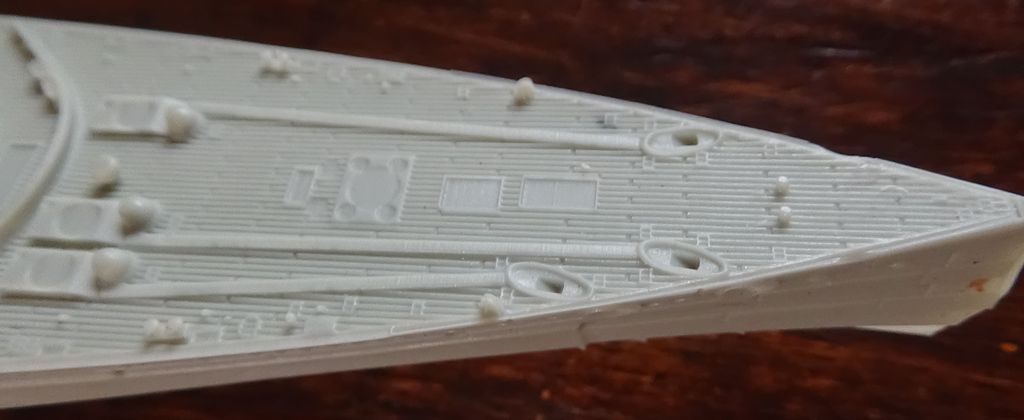
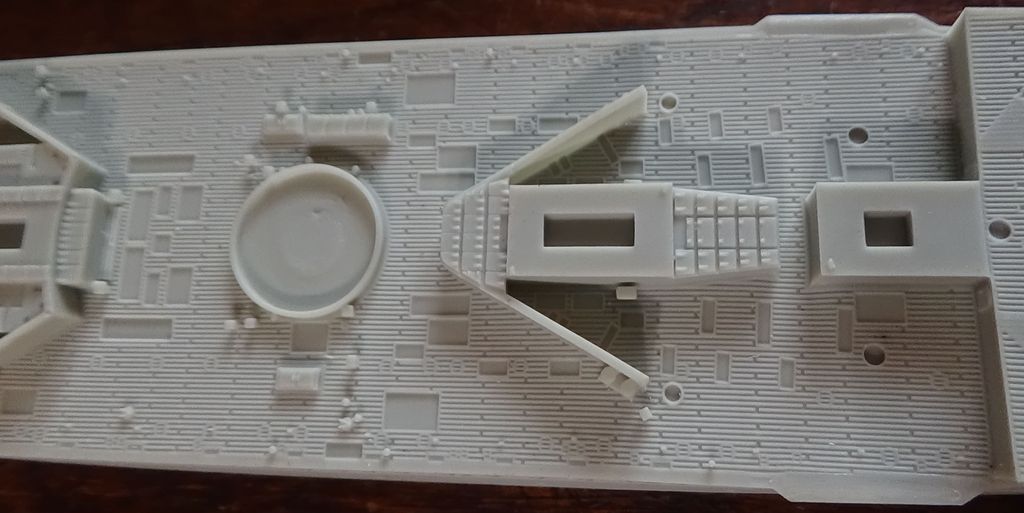
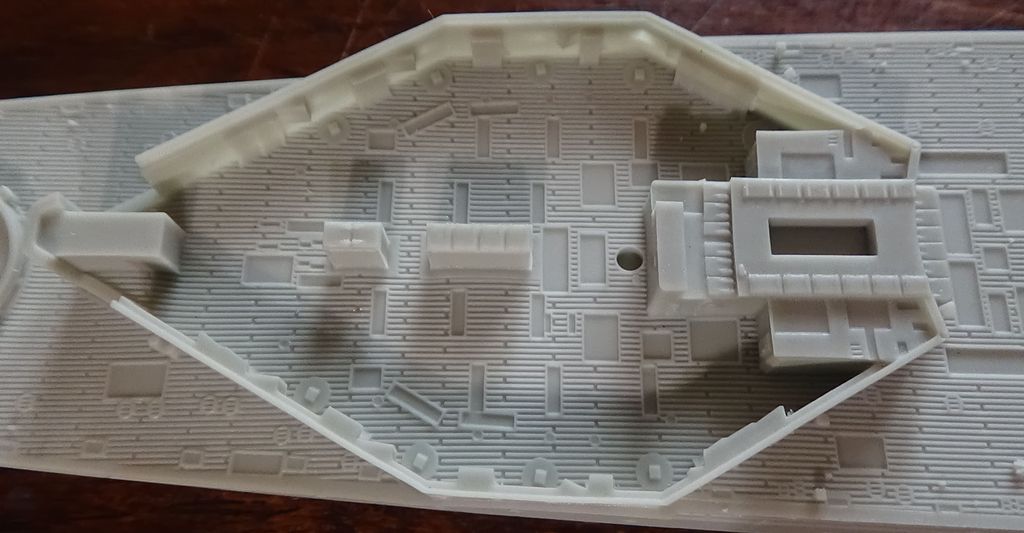
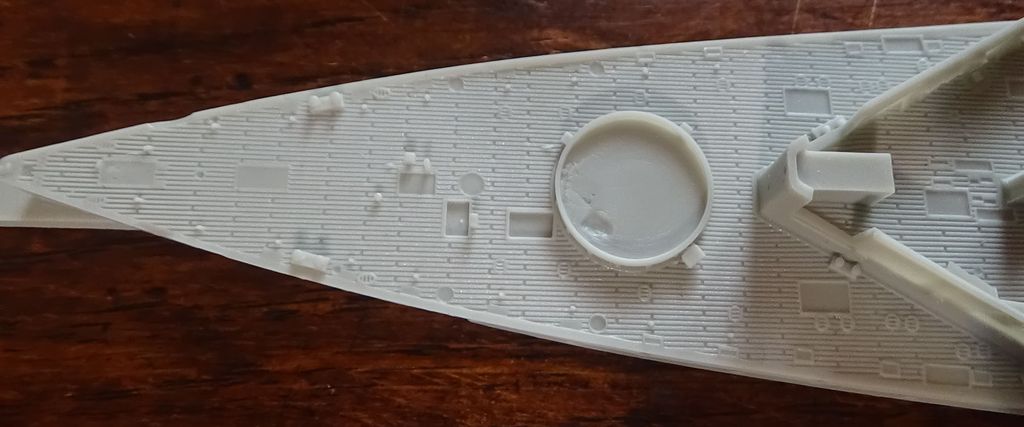

La maquette Triumph Model est disponible en deux versions, waterline et pleine coque et peut être assemblée pour représenter le Lion en 1914 et en 1916.
Les maquettes précédentes de la marque péchaient un peu par la qualité des moulages des petites pièces et les détails trop exagérés sur la coque. Ici, à part la coque toujours en résine moulée, l'intégralité des pièces est réalisée dans une impression 3D d'une finesse assez impressionnante. La coque comporte des détails de surface (plancher) beaucoup plus discrets.
En comparant les pièces et la coque avec celles de l'Invincible de Flyhawk, force est de constater que, surprise, Triumph Model l'emporte cette fois, les deux marques étant toujours très loin devant la concurrence.
The Triumph Model comes in two versions, waterline and full hull, and can be assembled to represent the Lion in 1914 and 1916. The brand's previous models were somewhat lacking in the quality of the moulding of the small parts and the overly exaggerated details on the hull. Here, apart from the hull, which is still made of moulded resin, all the parts are 3D printed to an impressive degree of finesse. The hull has much more discreet surface details (planking). Comparing the parts and the hull with those of Flyhawk's Invincible, it's clear that Triumph Model is the winner this time, with both brands still well ahead of their other competitors.
Les pièces 3D principales en résine orange/ The orange resin main 3D parts:


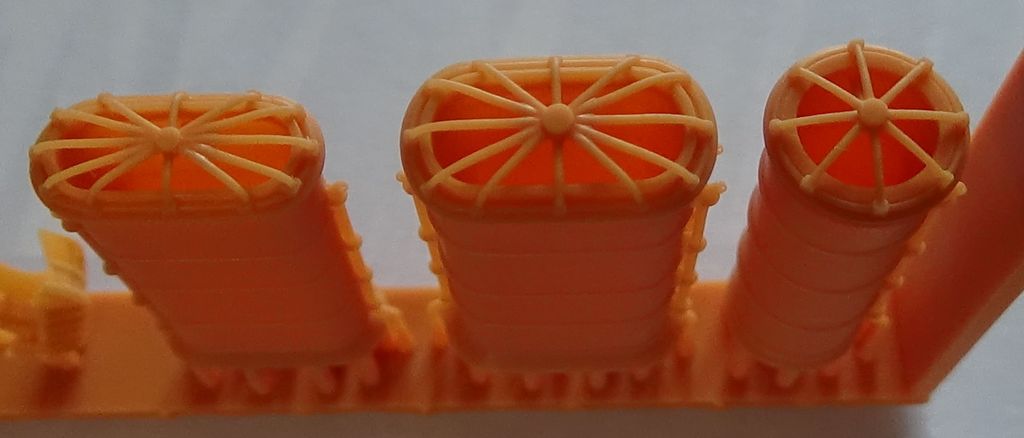

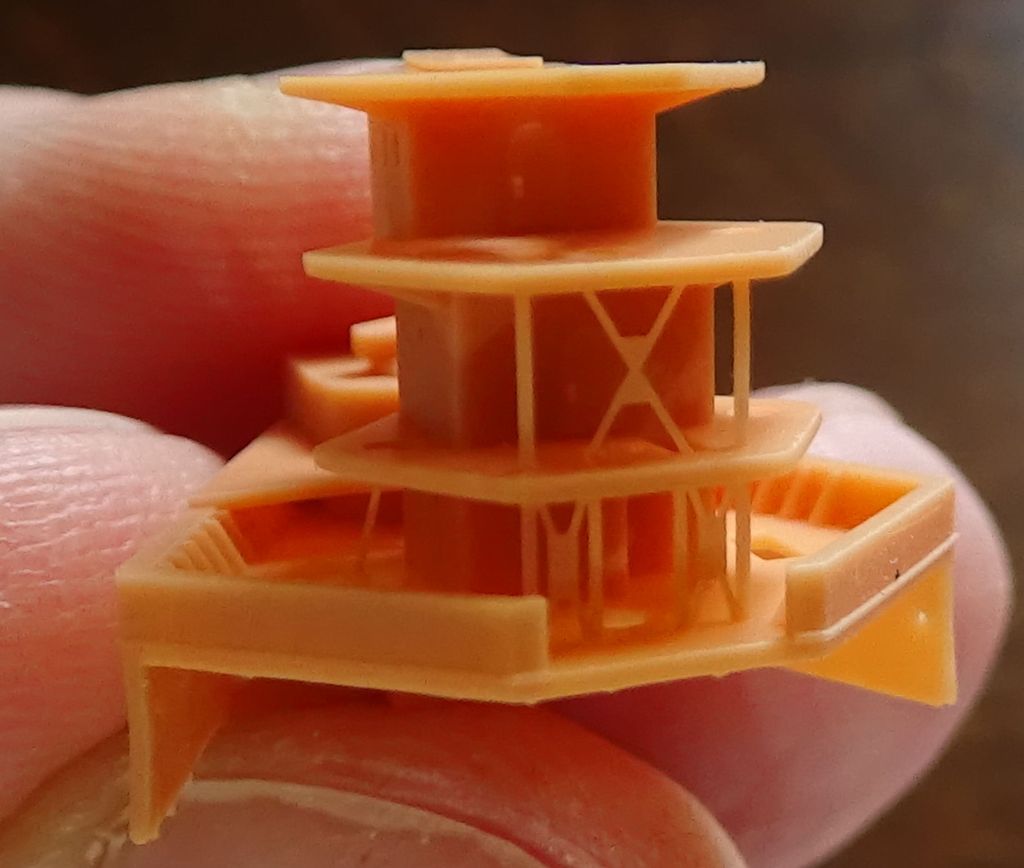
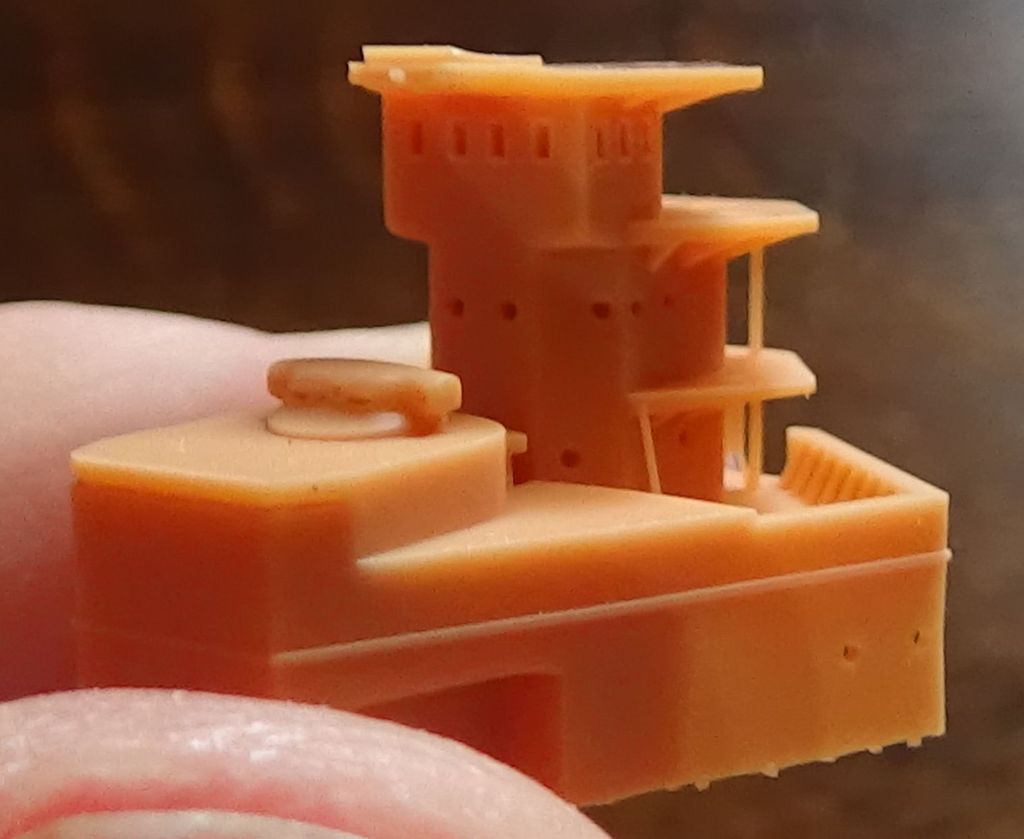
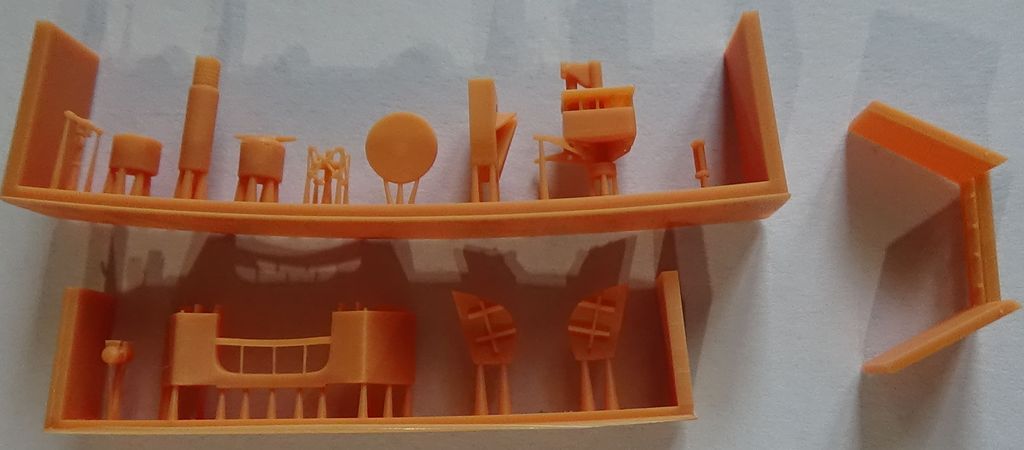
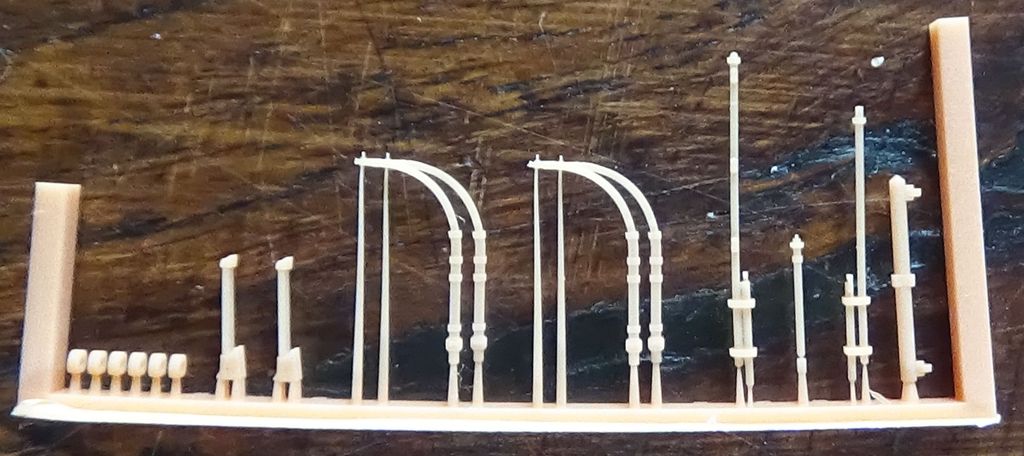
Les petites pièces 3D imprimées dans une résine noire extrêmement fine/ Small 3D part printed in black resin:
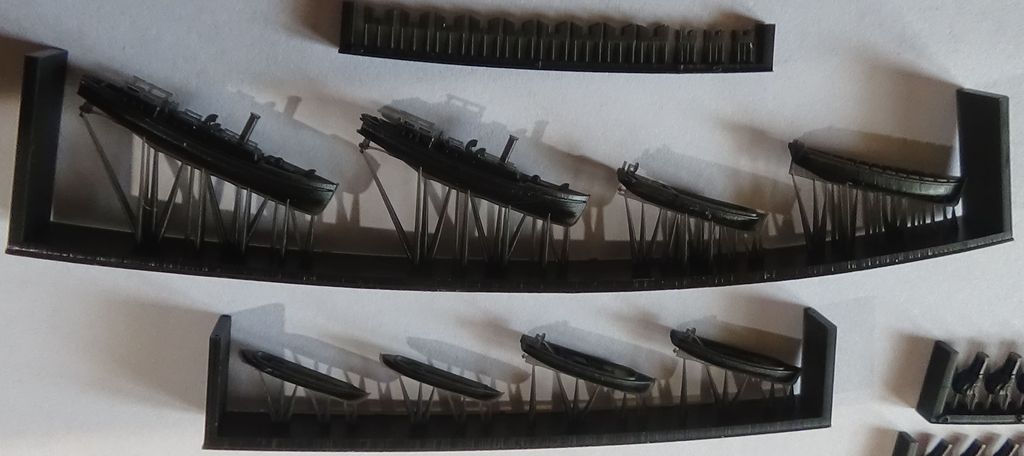
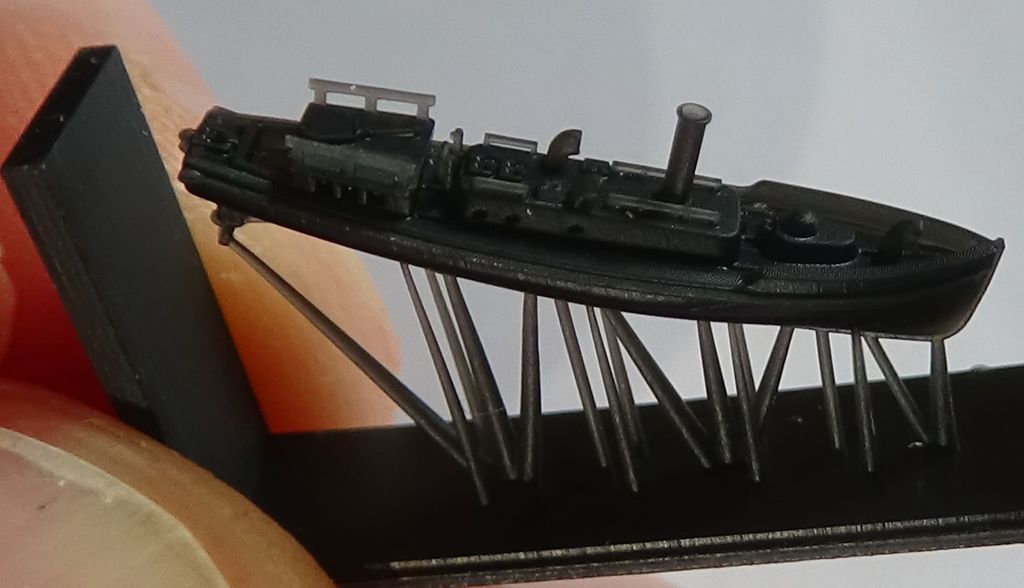

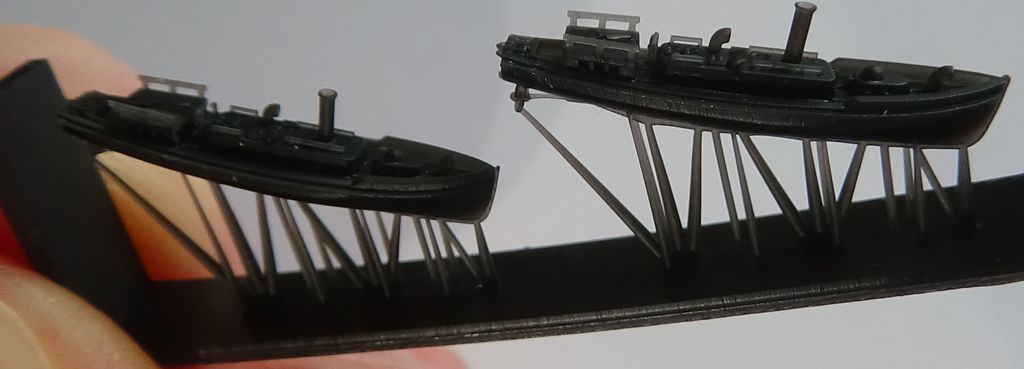

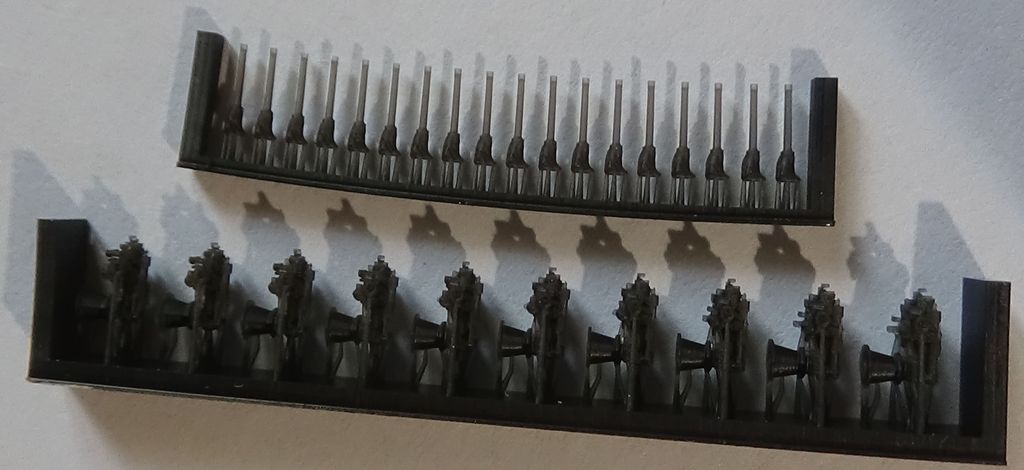
Les braies pour les canons de 343 sont fournies pour deux élévations différentes :
Blast bags are supplied in two different elevations:
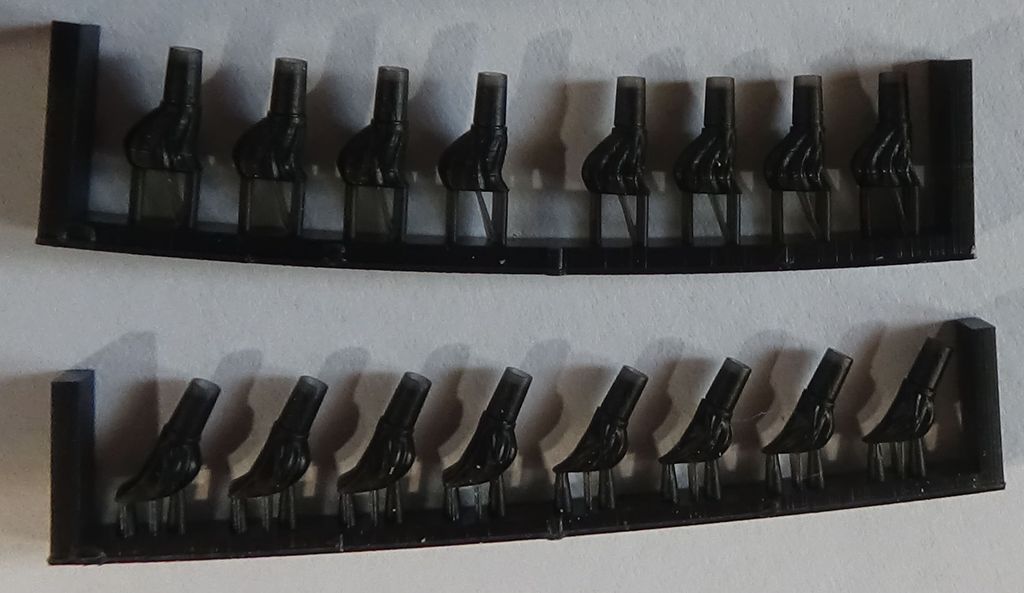
Chaines d'ancre :



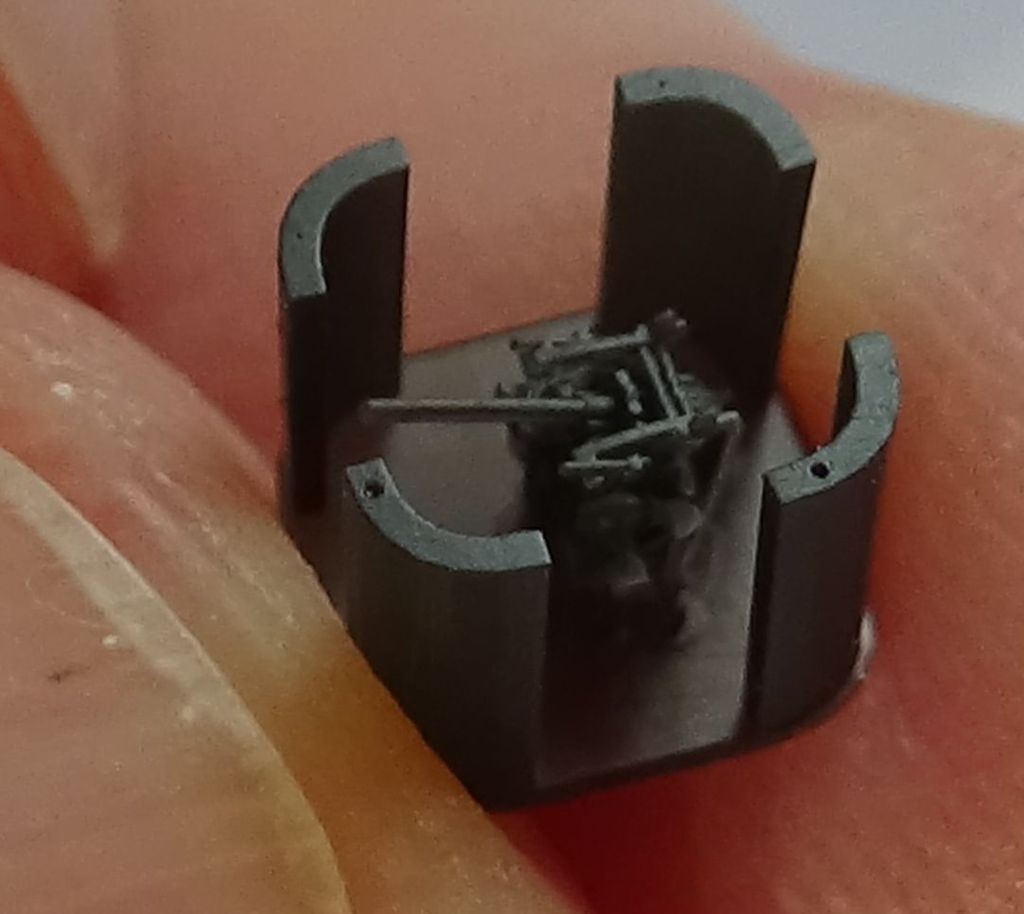











Les planches de PE
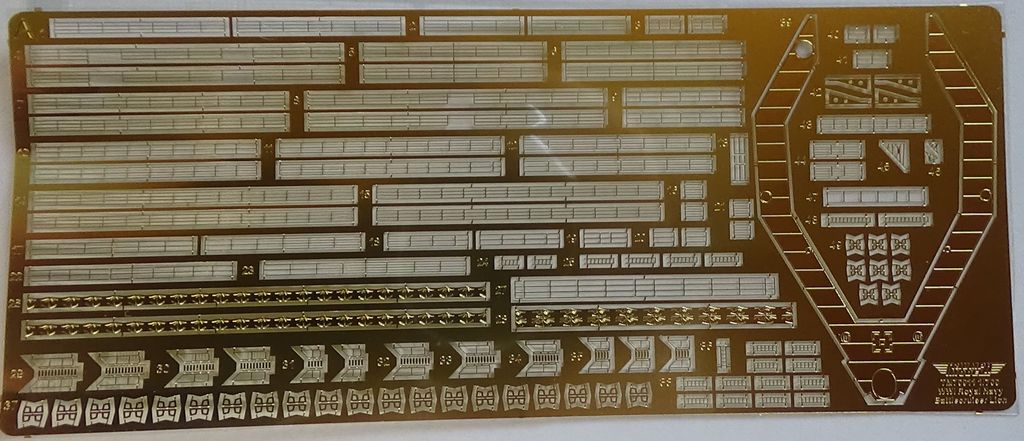

Les tubes de 343 en laiton :
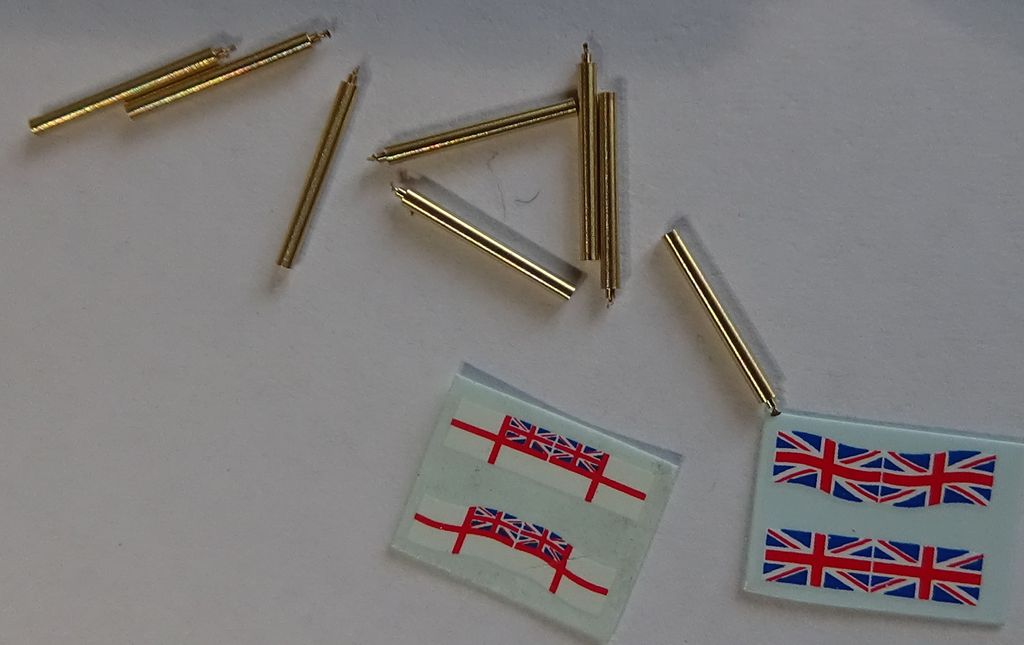
Extraits de la notice de montage :
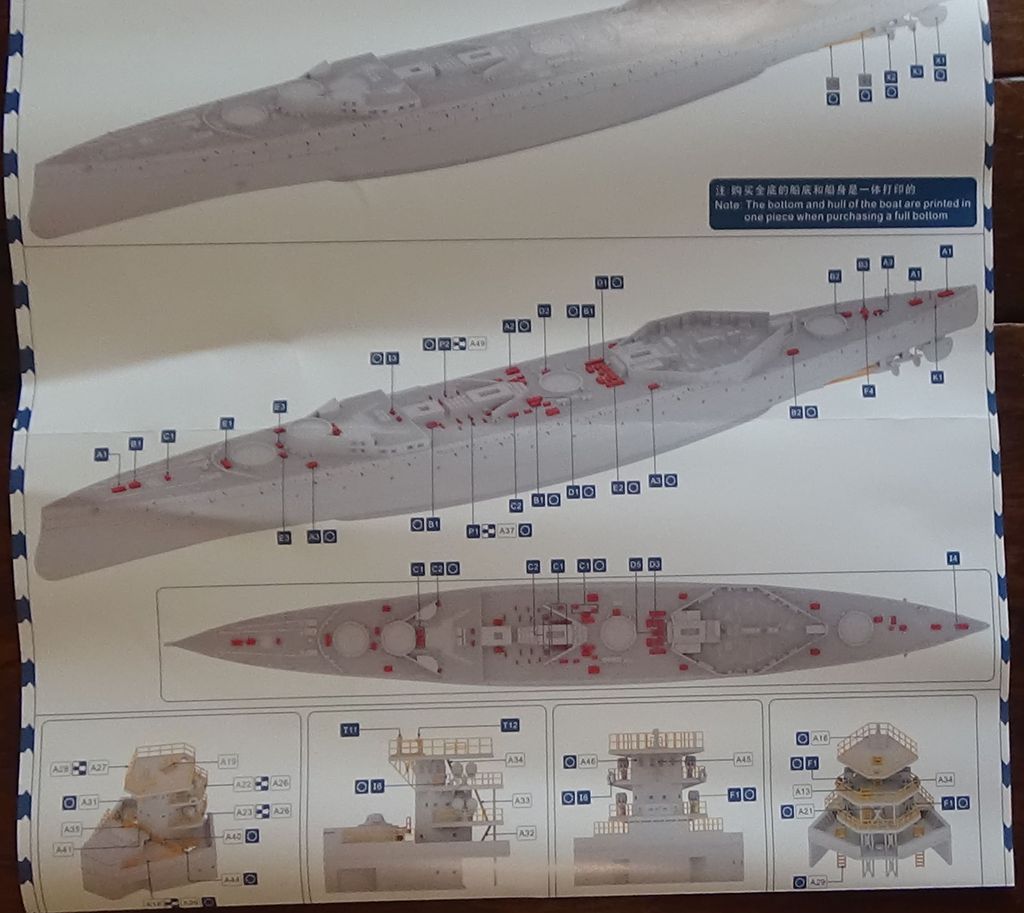
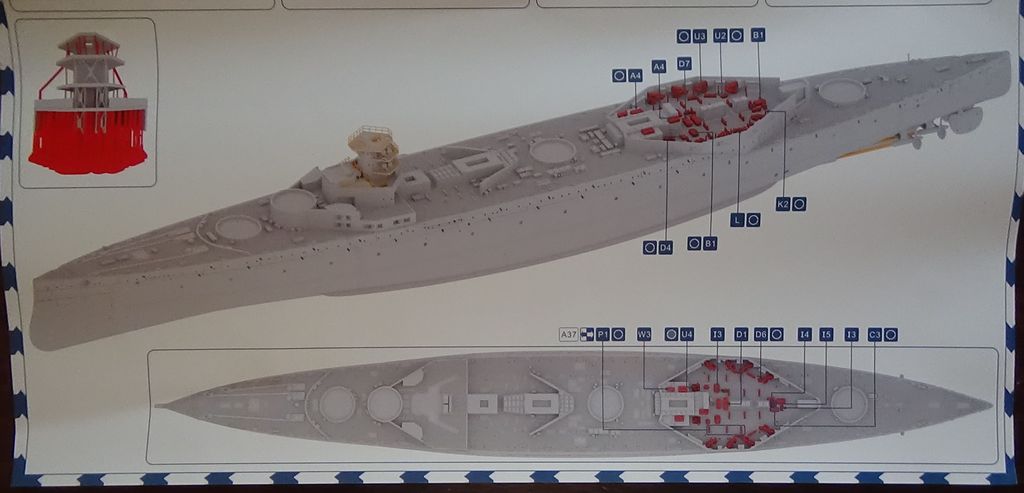
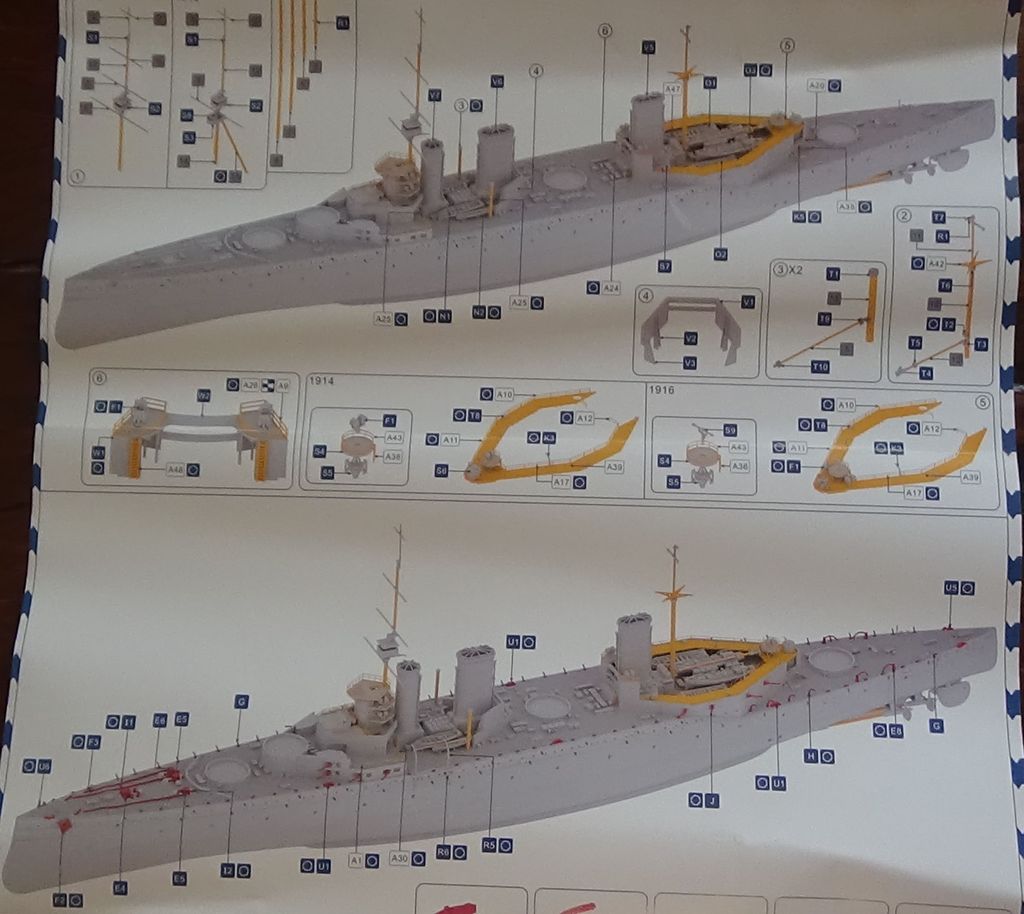
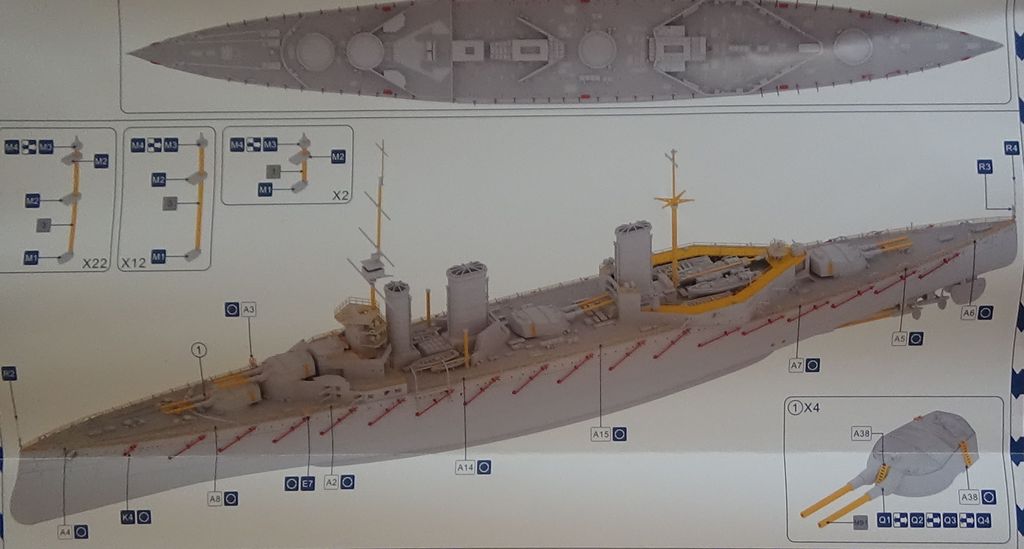
Le schéma de couleurs :

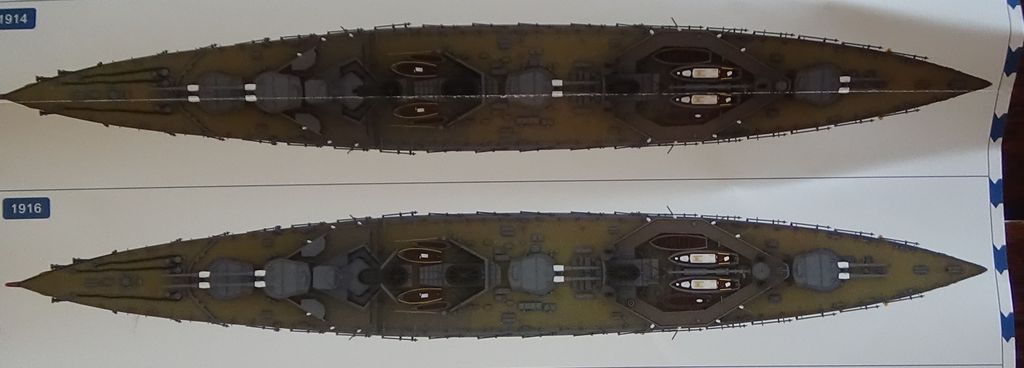
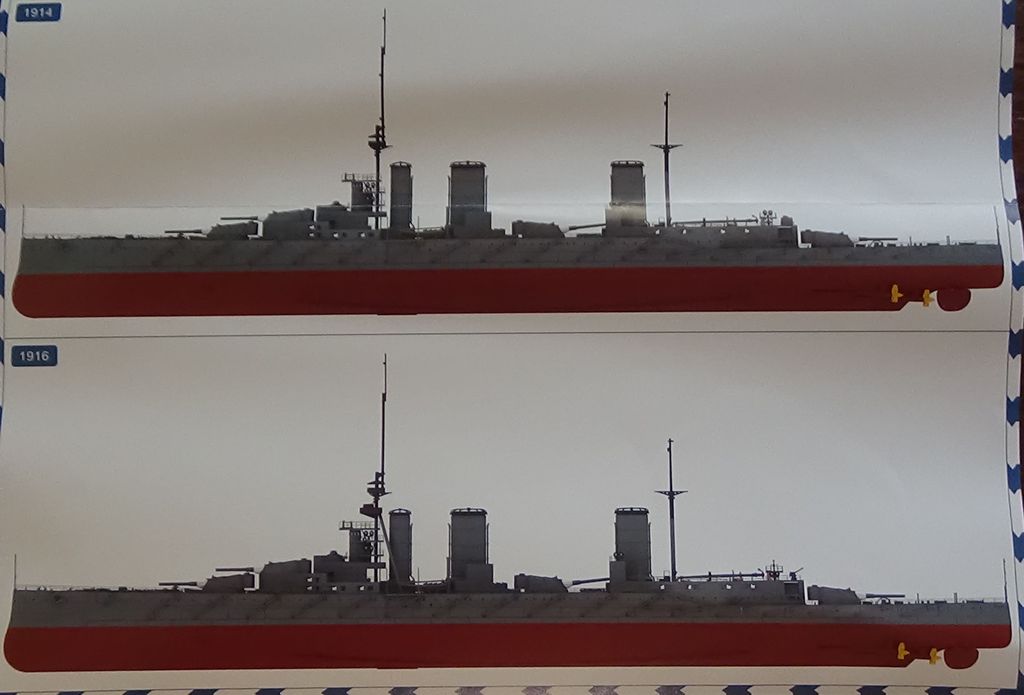
Conclusion : une très heureuse surprise et un grand saut en qualité pour Triumph Model. Espérons que leurs futurs kits seront du même niveau.
Conclusion: a very pleasant surprise and a big step up in quality for Triumph Model. Let's hope their future kits will be of the same standard.
_Bruno
Maquette sortie en 2024
Triumph Model kit, Resin, 3D, brass, PE, waterline version
Kit issued in 2024

La classe Lion était une paire de croiseurs de bataille (HMS Lion et HMS Princess Royal) construits pour la Royal Navy avant la Première Guerre mondiale. Surnommés les "Splendid Cats", ces navires représentaient une amélioration significative par rapport à leurs prédécesseurs de la classe Indefatigable en termes de vitesse, d'armement et de blindage. Ces améliorations ont été apportées en réponse aux croiseurs de bataille allemands de la classe Moltke, qui étaient à leur tour plus grands et plus puissants que les premiers croiseurs de bataille britanniques de la classe Invincible.
Le Lion servit de navire amiral aux croiseurs de bataille de la Grand Fleet pendant la Première Guerre mondiale. Il coula le croiseur léger allemand Cöln pendant la bataille de Heligoland Bight en août 1914 et participa aux batailles du Dogger Bank en 1915 et du Jutland l'année suivante. Il fut si gravement endommagé lors de la bataille du Dogger Bank qu'il dût être remorqué jusqu'au port. Au cours de la bataille du Jutland, le Lion fut victime d'un grave incendie de cordite qui aurait pu le détruire. Les deux navires étaient présents lors de l'action non concluante du 19 août 1916. Les deux navires passèrent le reste de la guerre à effectuer des patrouilles sans incident en mer du Nord ; ils assurèrent une couverture lointaine lors de la deuxième bataille de Heligoland Bight en 1917. En 1920, ils furent mis en réserve, puis vendus à la ferraille quelques années plus tard, conformément aux termes du traité naval de Washington de 1922.
Lors de la Bataille du Jutland le 1er juin 1916 le Lion était le navire amiral de l'escadre de Beatty. L'engagement débuta à 15h30 par un affrontement entre les croiseurs de bataille de l'amiral Beatty et ceux de l'amiral Hipper, dans un mouvement resté sous le nom de "Run to the South".
La distance se réduisit alors à moins de 16 000 m. Les navires britanniques étaient encore en train d'effectuer leur virage et seuls les deux navires de tête, le Lion et le Princess Royal, avaient stabilisé leur trajectoire lorsque les Allemands ouvrirent le feu les premiers à 15h48. Les tirs allemands furent précis dès le début, mais les Britanniques surestimèrent leur portée car les navires allemands se fondaient dans la brume. Le Lion, navire britannique de tête, engagea le Lützow, son homologue dans la formation allemande. Les tirs du Lützow étaient très précis et le Lion fut touché deux fois dans les trois minutes qui suivirent l'ouverture du feu par les Allemands. À 15 h 54, la portée n'était plus que de 11 800 m et Beatty ordonna un changement de cap de deux points à tribord pour ouvrir la portée à 15 h 57. Le Lion toucha le Lützow pour la première fois deux minutes plus tard, mais le Lützow lui rendit la pareille à 16 h lorsqu'un de ses obus de 305 mm atteignit la tourelle " Q " à une portée de 15 100 m. L'obus pénètra le joint entre la plaque frontale de 9 pouces de la tourelle et le toit de 3,5 pouces et explosa au centre du canon gauche, tua ou blessa toutes les personnes présentes dans la tourelle et déclencha un incendie qui couva, malgré les efforts déployés pour l'éteindre. Les récits des événements ultérieurs diffèrent, mais les portes du magasin avaient été fermées et le magasin inondé lorsque le feu couvant a enflammé les huit charges propulsives pleines dans la salle de travail de la tourelle à 16 h 28. Elles brûlèrent violemment, les flammes atteignant la tête de mât, et tuèrent la plupart des équipages du magasin et de la soute à obus qui se trouvaient encore dans la partie inférieure de la tourelle. La pression du gaz déforma gravement les portes du magasin, qui aurait probablement explosé s'il n'avait pas déjà été inondé, entrainant la perte probable du navire. Le major des Royal Marine Francis Harvey, commandant de la tourelle mortellement blessé, reçut la Victoria Cross à titre posthume pour avoir ordonné l'inondation du magasin.
Au cours de cette action, les croiseurs de bataille HMS Indefatigable et HMS Queen Mary furent touchés par des tirs plongeants qui percèrent leur mince blindage de pont, provoquèrent l'explosion des soutes et la désintégration des deux navires. Cette bataille mit en lumière la faiblesse principale du croiseur de bataille : son blindage trop léger. Ce type de navire avait été conçu en 1906 à une époque où la cadence et la précision du tir étaient suffisamment lentes pour qu'un navire très rapide puisse lui échapper. 10 ans plus tard cet avantage était réduit à néant.

The Lion class was a pair of battlecruisers (HMS Lion and HMS Princess Royal) built for the Royal Navy before the First World War. Nicknamed the "Splendid Cats", these ships represented a significant improvement on their Indefatigable-class predecessors in terms of speed, armament and armour. These improvements were made in response to the German Moltke-class battlecruisers, which were in turn larger and more powerful than the early British Invincible-class battlecruisers. The Lion served as flagship for the Grand Fleet battlecruisers during the First World War. She sank the German light cruiser Cöln during the Battle of Heligoland Bight in August 1914 and took part in the Battles of Dogger Bank in 1915 and Jutland the following year. She was so badly damaged during the Battle of the Dogger Bank that she had to be towed back to port. During the Battle of Jutland, the Lion suffered a serious cordite fire that could have destroyed her. Both ships were present during the inconclusive action on 19 August 1916. The two ships spent the rest of the war on uneventful patrols in the North Sea and provided distant cover during the Second Battle of Heligoland Bight in 1917. In 1920, they were mothballed and sold for scrap a few years later, in accordance with the terms of the Washington Naval Treaty of 1922.
During the Battle of Jutland on 1st June 1916, the Lion was the flagship of Beatty's squadron. The engagement began at 3.30pm with a clash between Admiral Beatty's battlecruisers and Admiral Hipper's battlecruisers, in what became known as the "Run to the South". The distance was then reduced to less than 16,000 metres. The British ships were still turning and only the two leading ships, the Lion and the Princess Royal, had stabilised their course when the Germans opened fire first at 3.48pm. The German fire was accurate from the start, but the British overestimated its range as the German ships blended into the fog. The Lion, the lead British ship, engaged the Lützow, its counterpart in the German formation. The Lützow's fire was very accurate and the Lion was hit twice within three minutes of the Germans opening fire. At 3.54pm, the range was down to 11,800m and Beatty ordered a two-point course change to starboard to open the range at 3.57pm. The Lion hit the Lützow for the first time two minutes later, but the Lützow returned the favour at 4pm when one of her 305mm shells hit the 'Q' turret at a range of 15,100m. The shell penetrated the joint between the turret's 9-inch faceplate and the 3.5-inch roof and exploded in the centre of the left gun, killing or wounding everyone in the turret and starting a fire that smouldered despite efforts to extinguish it. Accounts of later events differ, but the magazine doors had been closed and the magazine flooded when the smouldering fire ignited the eight full propellant charges in the turret workroom at 4.28pm. They burned violently, the flames reaching the masthead, and killed most of the magazine and shell bay crews still in the lower part of the turret. The pressure of the gas severely distorted the magazine doors, which would probably have exploded had it not already been flooded, leading to the probable loss of the ship. Royal Marine Major Francis Harvey, the mortally wounded turret commander, was posthumously awarded the Victoria Cross for ordering the flooding of the magazine. During this action, the battlecruisers HMS Indefatigable and HMS Queen Mary were hit by plunging fire that pierced their thin deck armour, causing the bunkers to explode and the two ships to disintegrate. This battle highlighted the main weakness of the battlecruiser: its armour was too light. This type of ship had been designed in 1906 at a time when the rate and accuracy of fire were slow enough for a very fast ship to escape. 10 years later, this advantage had been wiped out.






La maquette Triumph Model est disponible en deux versions, waterline et pleine coque et peut être assemblée pour représenter le Lion en 1914 et en 1916.
Les maquettes précédentes de la marque péchaient un peu par la qualité des moulages des petites pièces et les détails trop exagérés sur la coque. Ici, à part la coque toujours en résine moulée, l'intégralité des pièces est réalisée dans une impression 3D d'une finesse assez impressionnante. La coque comporte des détails de surface (plancher) beaucoup plus discrets.
En comparant les pièces et la coque avec celles de l'Invincible de Flyhawk, force est de constater que, surprise, Triumph Model l'emporte cette fois, les deux marques étant toujours très loin devant la concurrence.
The Triumph Model comes in two versions, waterline and full hull, and can be assembled to represent the Lion in 1914 and 1916. The brand's previous models were somewhat lacking in the quality of the moulding of the small parts and the overly exaggerated details on the hull. Here, apart from the hull, which is still made of moulded resin, all the parts are 3D printed to an impressive degree of finesse. The hull has much more discreet surface details (planking). Comparing the parts and the hull with those of Flyhawk's Invincible, it's clear that Triumph Model is the winner this time, with both brands still well ahead of their other competitors.
Les pièces 3D principales en résine orange/ The orange resin main 3D parts:








Les petites pièces 3D imprimées dans une résine noire extrêmement fine/ Small 3D part printed in black resin:






Les braies pour les canons de 343 sont fournies pour deux élévations différentes :
Blast bags are supplied in two different elevations:

Chaines d'ancre :















Les planches de PE


Les tubes de 343 en laiton :

Extraits de la notice de montage :




Le schéma de couleurs :



Conclusion : une très heureuse surprise et un grand saut en qualité pour Triumph Model. Espérons que leurs futurs kits seront du même niveau.
Conclusion: a very pleasant surprise and a big step up in quality for Triumph Model. Let's hope their future kits will be of the same standard.
_Bruno
